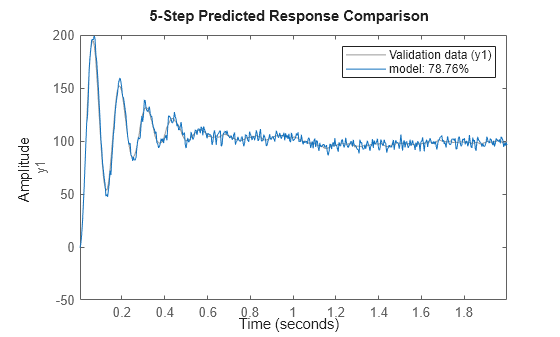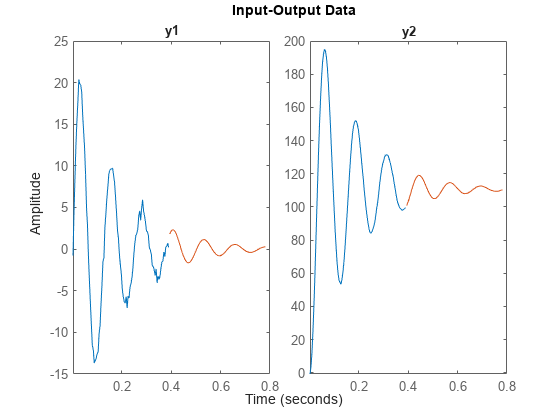估计 ARIMA 模型
此示例说明如何估计自回归综合移动平均 (ARIMA) 模型。
有时需要包含非平稳趋势(季节性)的时间序列模型。此类模型之一是 ARIMA 模型。这些模型在噪声源中包含一个固定积分器。因此,如果 ARMA 模型的控制方程表示为 A(q)y(t)=Ce(t),其中 A(q) 表示自回归项,C(q) 表示移动平均项,则 ARIMA 模型的相应模型表示为
其中项 表示离散时间积分器。类似地,您可以为 ARI 和 ARIX 模型制定方程。
使用时间序列模型估计命令 ar、arx 和 armax,您可以将积分器引入噪声源 e(t)。您可以通过使用估计命令中的 IntegrateNoise 参数来执行此操作。
估计方法不考虑时间序列数据中的任何恒定偏移。引入噪声积分器的能力不仅限于时间序列数据。您也可以对输入-输出模型执行此操作,因为其中的干扰可能会受到季节性的影响。一个例子是 ARIMAX 结构的多项式模型:
请参阅 armax 参考页面中的示例。
估计具有线性趋势的标量时间序列的 ARI 模型。
load iddata9 z9 Ts = z9.Ts; y = cumsum(z9.y); model = ar(y,4,'ls','Ts',Ts,'IntegrateNoise', true); % 5 step ahead prediction compare(y,model,5)

估计一个多元时间序列模型,使得噪声积分仅存在于两个时间序列中的一个中。
load iddata9 z9 Ts = z9.Ts; y = z9.y; y2 = cumsum(y); % artificially construct a bivariate time series data = iddata([y, y2],[],Ts); na = [4 0; 0 4]; nc = [2;1]; model1 = armax(data, [na nc], 'IntegrateNoise',[false; true]); % Forecast the time series 100 steps into future yf = forecast(model1,data(1:100), 100); plot(data(1:100),yf)

如果输出耦合(na 不是对角矩阵),情况会更加复杂,简单地在第二个噪声通道上添加积分器是行不通的。